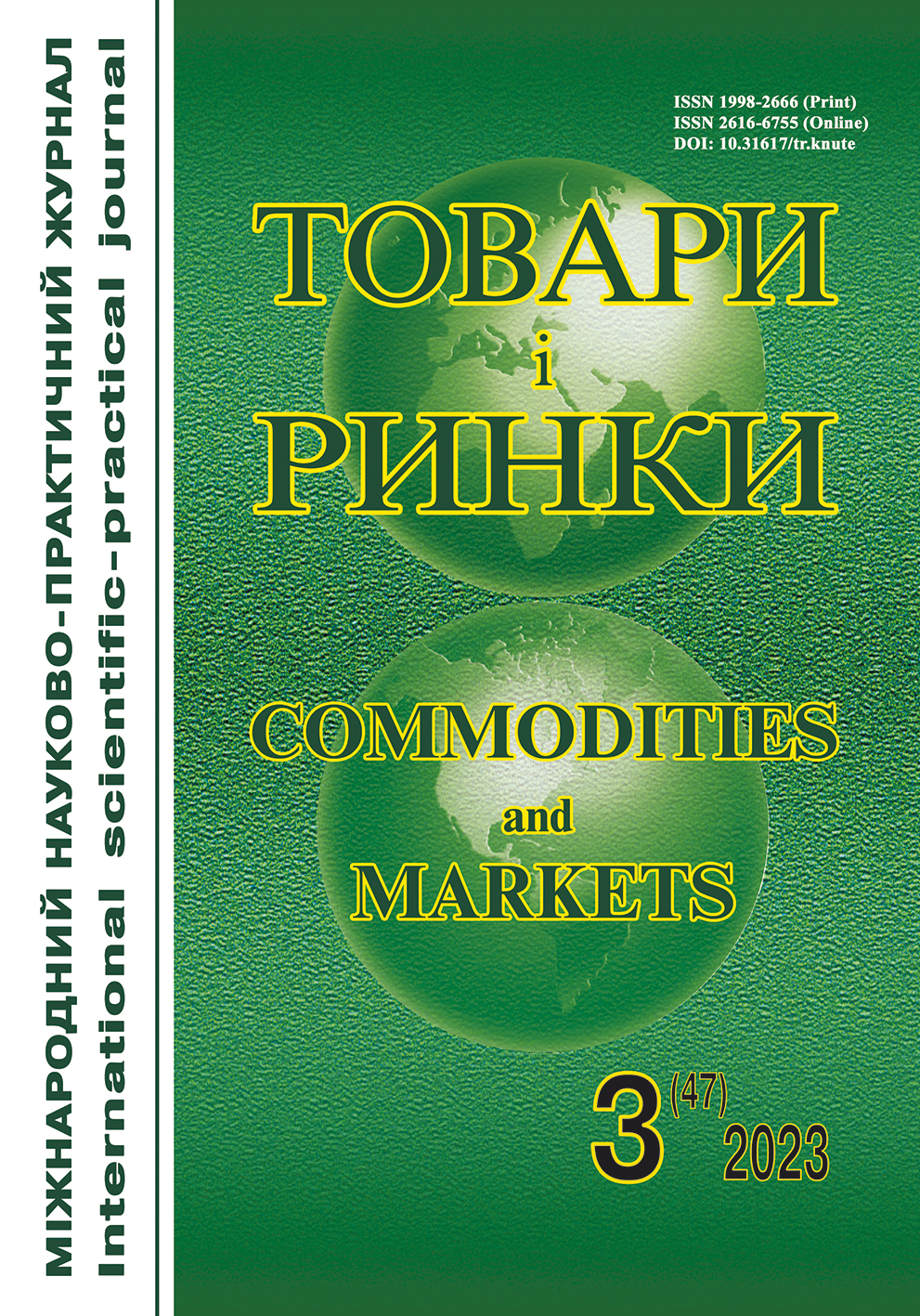Functional and technological properties of flour mixtures for dough
DOI:
https://doi.org/10.31617/2.2023(47)09Keywords:
gluten, elasticity, water absorption capacity, rheology, sprouted grain, flour.Abstract
The use of ready-made flour mixtures for the production of bakery, culinary, and confectionery products helps to optimize the technological process. The use of flour made from sprouted wheat grains in flour mixtures, which has significantly higher nutritional value than regular wheat flour, significantly affects the physicochemical characteristics of the dough as it does not contain gluten, which plays a crucial role in its structural and mechanical properties. Therefore, it is important to investigate its optimal concentration and technological conditions for use. The aim of the study the properties of flour mixtures made from a combination of high-grade wheat flour, flour from sprouted wheat grains, and Tylliria carob powder, and to determine its technological suitability for different types of confectionery dough. For this, the functional and technological indicators of mixtures of both types of flour in ratios from 10 to 90% and carob powder in the amount of 10% of the mass of wheat flour of the highest grade were investigated. Based on the conducted research on the properties of flour mixtures, it was found that the indicators of water absorption capacity, elasticity, and formation time decrease, while the dilatation indicator increases. These findings suggest a low ability to form dough with high structural and mechanical properties.
The results of the research on physicochemical properties (water absorption capacity, formation time, dilatation, and dough elasticity) of flour mixtures determine their potential technological application in low gluten confectionery dough, including sponge and shortcrust dough.
References
Sobko, A. (2019). Innovative technologies of functional flour confectionery for students. Restaurant and Hotel Consulting. Innovations, 2(1), 94-108. https://doi.org/10.31866/2616-7468.2.1.2019.170415
Sylchuk, T. A., Furmanova, Yu. P., & Pavliuchenko, O. S. (2020). Theoretical prerequisites for creating flour mixes for restaurants. Equipment and technologies of food production, 2(41), 41-46.
Sheludko, V. M. (2019). Use of cereal flour in biscotti technology. Scientific Bulletin of PUET: Technical Sciences, 1(91), 15-20.
Iurchenko, S. L., & Shabelska, I. I. (2018). Impro-vement of recipe composition of semi-finished biscuit using multigrain flour. Young Scientist, 10(62), 448-451.
Mykolenko, S. Yu., & Zakharenko, A. A. (2021). Study of the effect of amaranth and flax flour on the quality of cookies. Technical sciences and technologies, 1(19), 228-240, https://doi.org/10.25140/2411-5363-2020-1(19)-228-240
Novikova, N. V., & Kamienieva, R. S. (2020). The use of non-traditional raw materials to improve the consumption properties of wafer-based cakes. Bulletin of KhNTU. Technology of light and food industry, 2(73), 48-53.
Hospodarenko, H. М., Liubych, V. V., Polianetska, I. O., & Novikov, V. V. (2017). Formation of the quality of confectionery products from wheat flour of different varieties and lines. Bulletin of Uman National University of Horticulture, (2), 102-110.
Tkachenko, A. S., Huba, L. M., Basova, Yu. O., Horiachova, O. O., & Syrokhman, I. V. (2015). Development of organic cookies with improved consumption properties using safety management approaches. https://media.neliti.com/media/publications/398999-developing-organic-cookies-with-improved-26176731.pdf
Filinska, T., Shevchenko, V., Filinska, A., Pavliuk, S., & Sukha, I. (2023). Study of the properties of multicomponent mixtures of flour. Technical sciences and technologies, 1(31), https://doi.org/10.25140/2411-5363-2023-1(31)-117-125
Romanovska, O. (2022). Technology elaboration of biscuits with reduced sugar content. Restaurant and Hotel Consulting. Innovations, 5(1), 97-109. https://doi.org/10.31866/2616-7468.5.1.2022.260881
Sęczyk, Ł., Świeca, M., & Gawlik-Dziki, U. (2016). Effect of carob (Ceratonia siliqua L.) flour on the antioxidant potential, nutritional quality, and sensory characteristics of fortified durum wheat pasta. Food Chemistry, (194), 637-642. https://doi.org/10.1016/j.foodchem.2015.08.086
Kravchenko, M., Piddubnyi, V., & Romanovska, O. (2017). Structural and mechanical properties of biscuit dough with "Zdorovya". International scientific-practical journal Commodities and markets, 2(1), 86-96.
Kravchenko, M. F., & Romanovska, O. L. (2016). The effect of "Zdorovya" flour on the rheological characteristics of gluten in flour mixtures. International scientific-practical journal Commo-dities and markets, 1(21), 177-184.
Hřivna, L., Zigmundová, V., Burešová, I., Maco, R., Vyhnánek, T., & Trojan, V. (2018). Rheological properties of dough and baking quality of products using coloured wheat. Plant Soil Environ, 64(5), 203-208. https://doi.org/10.17221/62/2018-PSE
Kravchenko, M. F., Danyliuk, I. P., & Romanovska, O. L. (2022). Technological features of flour composite mixtures. Innovative technologies and equipment: development prospects of the food and restaurant industries. Baltija Publishing. https://doi.org/10.30525/978-9934-26-205-0-9
Tkachyk, S. O., Leshchuk, N. V., & Prysiazhniuk, O. I. (2016). Methodology for the qualification examination of plant varieties for suitability for distribution in Ukraine. General part. Ukrainian Institute of Expertise of Plant Varieties.
Perepelytsia, M. P. (2019). The gluten quality of semi-finished dough for flour culinary products. Bulletin of Kharkiv National Technical University of Agriculture, (207) Modern directions of technology and mechanization of processing and food production processes.




